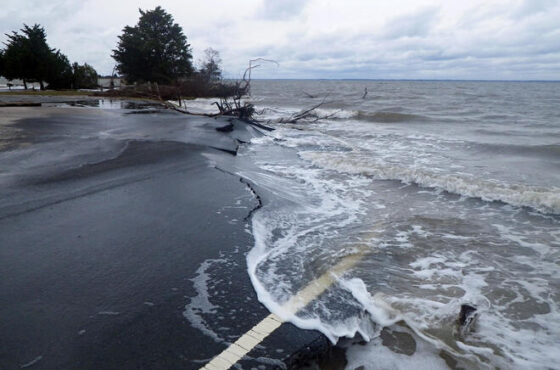IL Low-Income Energy Programs Expand While Federal Cuts Loom
Published by the Natural Resources Defense Fund

United Winthrop Tower Cooperative
Photo: Laura Goldberg
Exactly one year ago today on December 7, 2016, Illinois’ sweeping, bi-partisan energy legislation, the Future Energy Jobs Act (FEJA), was signed into law. FEJA puts Illinois on the map as one of the nation’s leaders in clean energy, especially when it comes to energy efficiency programs directed towards underserved communities.
The state’s two largest electric utilities, ComEd and Ameren Illinois, will allocate sizable energy efficiency budgets to programs that serve low-income Illinois residents thanks to FEJA. ComEd will nearly double their minimum requirement—spending around $48 million each year (over the next four years) on low-income efficiency programs. These dollars will help to support multi-family and single-family retrofits, energy efficiency kits, efficient lighting distribution in communities, supportive housing programs, affordable new construction programs, and more.
The low-income energy efficiency program provisions in FEJA will help the state to serve more low-income single-family homes and multi-family buildings than ever before. In addition, FEJA also calls for an advisory committee that includes organizations that work directly with economically disadvantaged communities, to provide feedback for how these programs are designed and implemented.
However, looming as a dark backdrop to this success in Illinois is what’s been threatened by the Trump Administration. Specifically, gutting federal energy and housing programs that serve the same Illinois low-income communities that these newly expanded state energy efficiency programs reach. Programs such as the following are on the chopping block:
- The Weatherization Assistance Program;
- The Low-Income Housing Energy Assistance Program (LIHEAP);
- Federal Rental Assistance; and
- Low-Income Housing Tax Credits (LIHTC)
Below is more information about each program and details about how many households these programs have served:

Source: “Cuts to affordable housing and energy assistance will harm struggling families,” Energy Efficiency for All
The state’s newly expanded low-income energy efficiency programs need the strong foundation that these federal housing and energy programs provide to economically disadvantaged residents in Illinois. Without these federal programs Illinois families will suffer, and the benefits of the state’s most monumental energy legislation will never be fully realized. Residents across the state rely on these programs for their overall wellbeing. For example, Ms. Norma Jones from Chicago’s Uptown neighborhood is a LIHEAP recipient and a member of United Winthrop Tower Cooperative, an affordable multifamily property. The building worked with the Community and Economic Development Association of Cook County (CEDA) to complete whole building and in-unit energy efficiency upgrades through the weatherization program in 2016. Norma’s energy bills used to be hundreds of dollars every month, but now due to LIHEAP and her building’s weatherization work her bills are less than $30 each month. She’s able to put her savings towards her medical expenses, and feels grateful to live in a safe, comfortable home.
 Ms. Norma Jones: “People really need these programs, we just need help.”
Ms. Norma Jones: “People really need these programs, we just need help.”
Photo: Laura Goldberg
Celebrate the anniversary of FEJA by defending these federal housing and energy programs. On December 8th, the Continuing Resolution funding the federal government is set to expire. Illinois legislators will have to vote on spending for the rest of the fiscal year, and will potentially be making decisions around these very programs. Educate your friends, neighbors, and legislators about why these programs are crucial for Illinois families all over the state.
By taking action now you’ll help FEJA live up to its full potential, helping to deliver access to energy efficiency and clean energy to all Illinois families.
Read the full article at: https://www.nrdc.org/experts/laura-goldberg/il-low-income-energy-programs-expand-while-federal-cuts-loom





